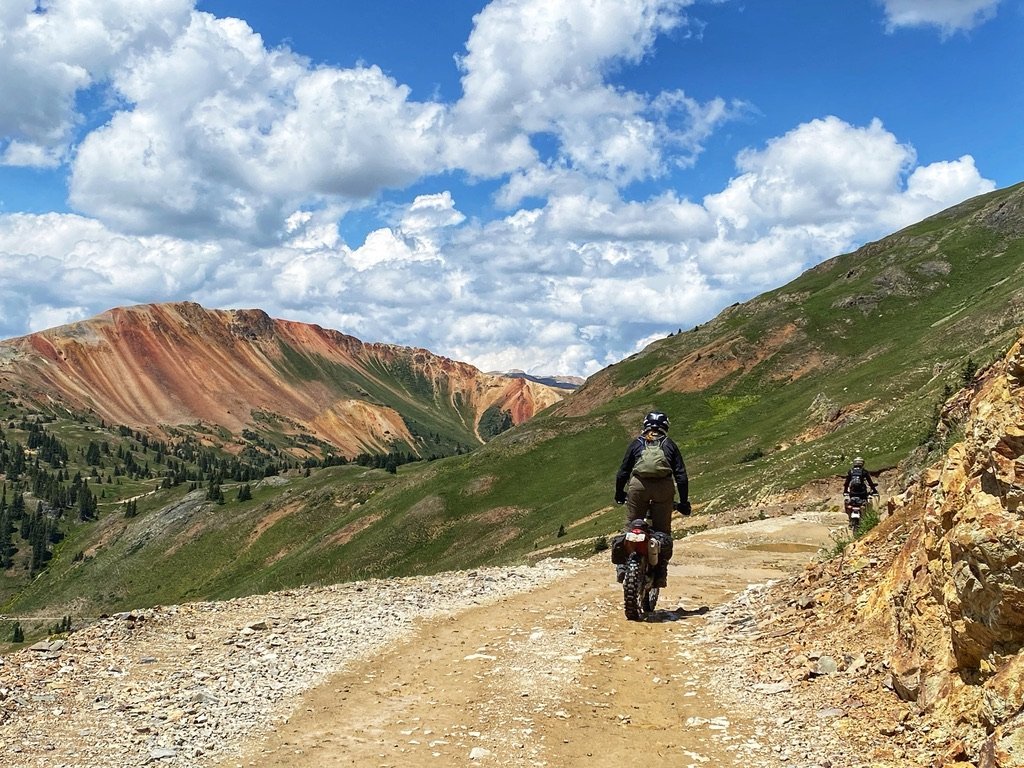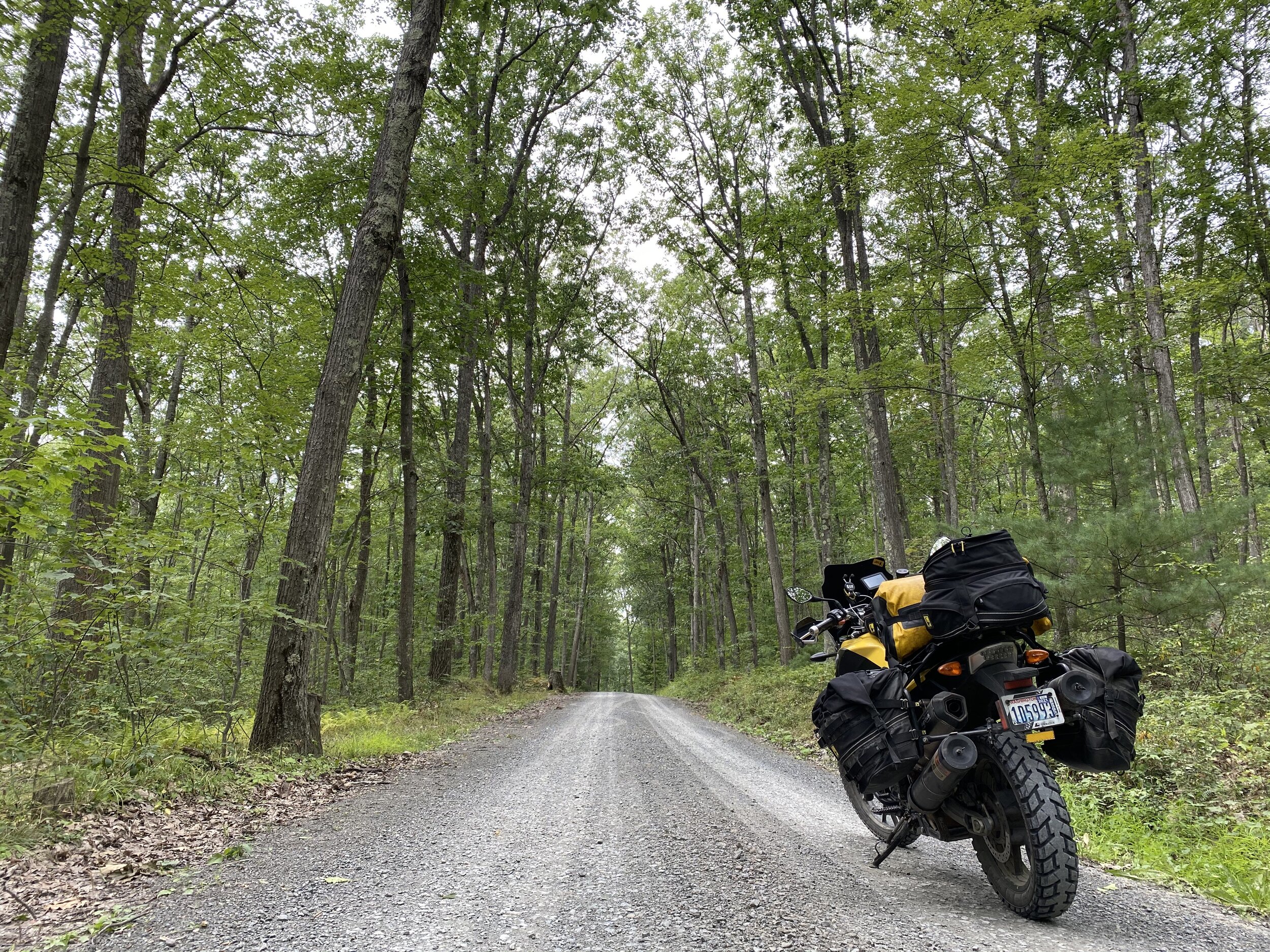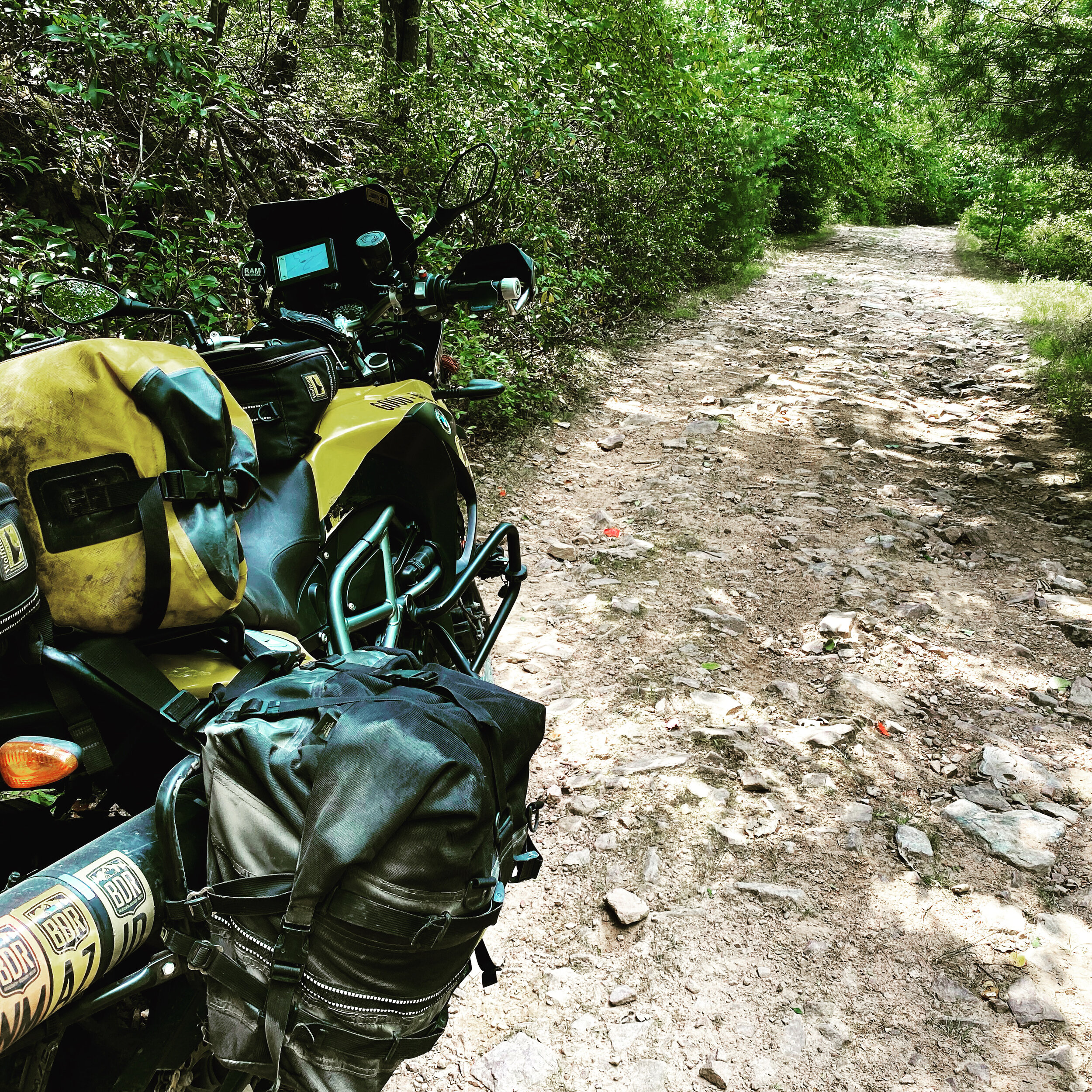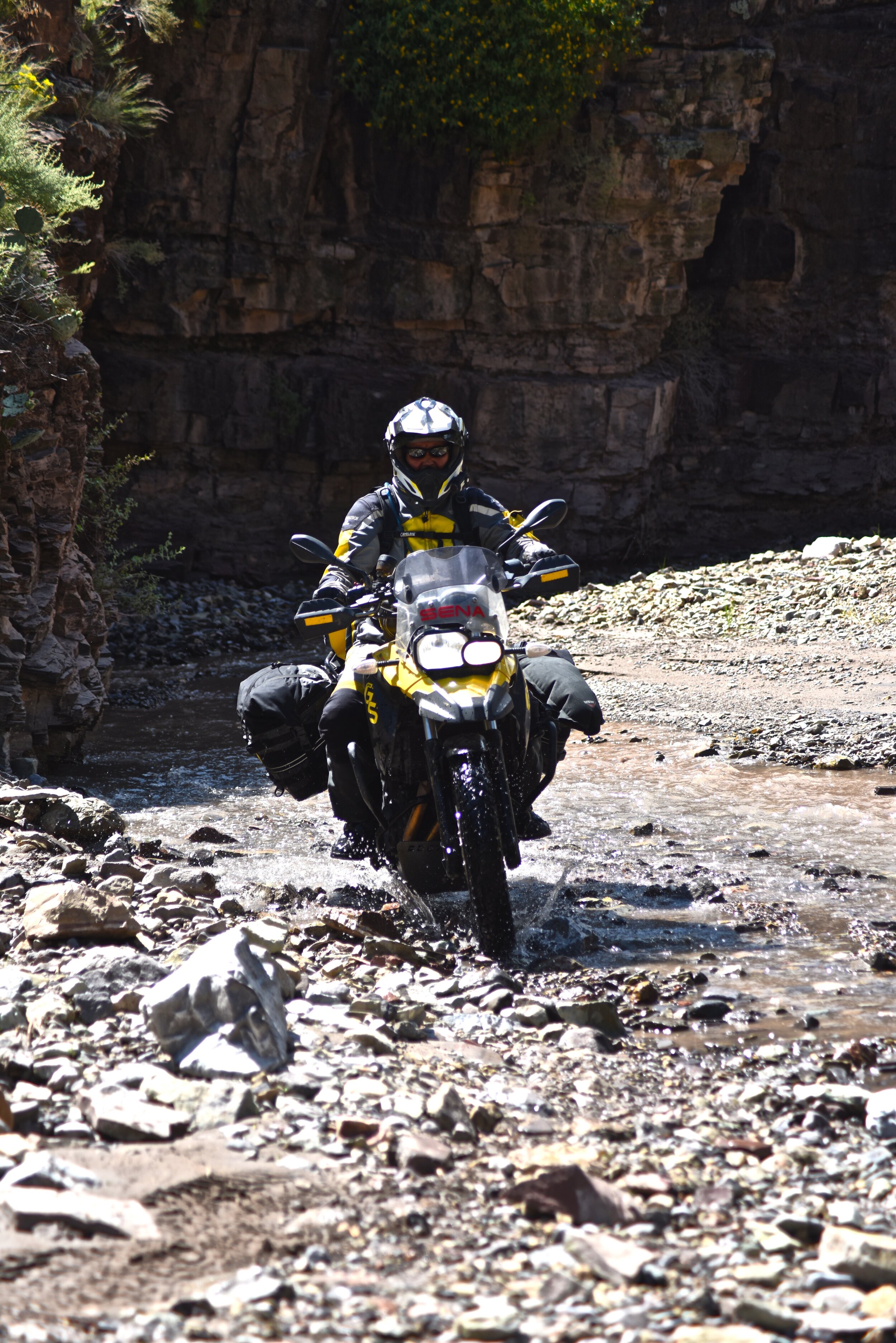
Rating System for Off-Street Terrain and Skills Needed for Such Terrain
Emphasis on Dual Sport and ADV Riding
I created this rating system as a guide to help you better assess yourself. For routes that were pre-rode, we will use this as a reference for the terrain we will be covering each day so you can make better decisions on what you are capable of from day-to-day.
THIS IS ONLY TO BE USED FOR MY TRAINING AND TOURS AND IS TO HELP YOU ASSESS WHERE YOUR SKILLS ARE IN RELATION TO THE TERRAIN MY TOURS WILL BE COVERING.
The purpose of this rating system is only to give dual sport and adventure riders a reference/guide, just like skiers and mountain bikers are given for the trails and routes they play on. When I rate a section, I am doing the best to reference the terrain that is present for the most part, but know that there could be a mix of different levels at times.
All the levels build on each other and riders must possess all of the skills from one level to the next. For example, to be considered a Level 3 Rider (Intermediate), you must be proficient at ALL the skills of a Level 1 and Level 2 Rider, as well as being proficient with the skills of a Level 3 Rider. If you possess all of the skills of a Level 1 and 2, and some of a Level 3 Rider, I’d consider you still in transition to being a Level 3 Rider.
Consider adding a level to the TERRAIN if:
A. Riding a 600cc + bike
B. Riding fully loaded
C. Conditions are wet
D. Lower fitness level
E. When fatigue level is higher on any given day for various reasons, such as your fitness level is being challenged because of riding for multiple days, you’re not fueling your body well enough, not getting enough rest, having lots of energy sucking activities like picking up bikes often, riding with tension, etc.
Level 1 Rider
Novice Level
IDBDR - Section 1
MABDR
TERRAIN FOR LEVEL 1 RIDERS
Gravel roads, well maintained and could include poorly maintained paved roads
Moderate wash boards
Freshly-graded road 1” deep
Slight steepness of hills with slight turns at entrance and/or exists
Shallow water crossings, less than 2”
Overall changing surfaces but good for cars, may have some embedded rock
MABDR
SKILLS NEEDED FOR LEVEL 1 RIDERS
Comfortable doing harder stops on low traction surfaces using both brakes (speeds of 12-18 mph)
Traction control and comfortable with bike moving around on 1” deep gravel roads
Ability to control bike while cornering on moderate wash boards
When cornering, understanding that using outside peg helps maintain traction
When cornering, understanding that using good body position helps maintain traction and control the bike
Good throttle control assists with overall bike control
Comfortable riding at 20-25 MPH on Level 1 terrain
MABDR
Level 2 Rider
Beginner Level
MABDR - Poe Daddy State Park
MABDR
TERRAIN FOR LEVEL 2 RIDERS
2-track with easy to go around obstacles/fairly well -maintained forest service roads
Patches of more loose surfaces, like moderate sand, softer gravel, shallow mud, loose shale, less than 3” deep
Occasional rocks/wide ruts (2’+)/logs less than 3”
Moderate steepness of hills, with some turns at the entrance and/or exists
Water crossings have a solid base and less than 3” deep
NEBDR - Class 4 Road
SKILLS NEEDED FOR LEVEL 2 RIDERS
Confident doing harder stops at higher speeds on low traction surfaces (speeds of 18-24 mph)
Comfortable moving around on the bike, no muscle tension
Comfortable keeping bike in balance on and off the bike
Ability to shift weight from ground to peg and alternating feet with smooth transitions
Control the bike using clutch and throttle interaction with no brakes, emphasis on hills
Ability to keep bike in tension using brakes, throttle and clutch when moving slow or during tight turns
Ability to steer the bike with the pegs
Ability to choose a line in order to cover the terrain/maneuver bike around some obstacles
Shifting and braking while standing
Ability to manage moderate short distant muddy and/or sandy conditions 20’ long and 2” deep
Higher comfort and control with slightly steeper hills Control = ability to manage the bike with lower speed, especially with down hills
Being able to pause at the top of a hill to assess what may be on the other side
Comfortable riding at 25-30 MPH on Level 1 terrain
Level 3 Rider
Intermediate Level
MABDR
NEBDR
TERRAIN FOR LEVEL 3 RIDERS
Rutted 2-track/narrower, less maintained forest roads
More rocks/shale, and obstacles like logs less than 6”
Steeper hills with hair pin turns at the entrance and/or exists
Standing water/larger mud puddles less than 6”
Water crossings less than 6” deep that may have a muddy or loose base
Moderate sand/silt levels (less than 6”), and narrower ruts (not much more than a tire width)
More hazards to maneuver around but still possible line choices
Hills have rock embedded, still can pick a line fairly easily
Some moderate off camber terrain
Winston, NM., Photo by Jon Beck
SKILLS NEEDED FOR LEVEL 3 RIDERS
Confident doing harder stops at higher speeds on low traction surfaces (speeds of 24-30 mph)
Comfortable moving around bike, loosely, including dabs
Ability to minimize turning radius for U-turns or close quarters (within 16’)
Ability to turn a bike around on a 2-track road
Very good at line selection, ability to put the bike where you want it
Confidence with bikes capability, lofting bike over 6” obstacles such as rocks, ruts, logs
For steep descents, ability to toggle between clutch and both brakes to control speed and avoid front wheel locking
Fine throttle and clutch control (no wheel spin, especially for steep ascents)
Ability to turn the bike around on a hill
Comfortable riding at 35-40 MPH on Level 1 terrain
Level 4 Rider
Advanced Level
NMBDR - Copper Creek, Photo by Jon Beck
NEBDR - Class 4 Road
TERRAIN FOR LEVEL 4 RIDERS
Rutted 2-track that may include wetter sections more over- growth
More loose, larger rock, greater than 6”, harder to pick a line
Deep sand and/or mud greater than 6”
Deep, narrow, long ruts greater than 50’
Steep hills with more obstacles, possible shale, hair pin turns, little to no line choose
Deeper water crossings greater than 6”, with looser base. The faster the water flow, the less deep to be equal to the above depth mentioned
Could encounter snow greater than 3”
Longer, possible steeper off-camber hills
Longer demanding sections of any of the above-mentioned terrains, can be a combination of terrains
SKILLS NEEDED FOR LEVEL 4 RIDERS
Confident doing harder stops at higher speeds on low traction surfaces (speeds of 30-40 mph)
Ability to do skid turns
Higher proficient level with moving around on the bike, including multiple dabbing
Very fine motor skills with all controls
Manage current bike very well (easily) on any of the varied terrain mentioned
Have the knowledge/skills to get yourself unstuck in deep sand and mud
Comfortable riding at 40-45 MPH on Level 1 terrain
NEBDR - Class 4
TERRAIN FOR LEVEL 5 RIDERS
Hard to pick a line, terrain best for dirt bikes
Larger amounts of loose shale, deep gravel greater than 6”, rocks greater than 6”
Lots of varied obstacles greater than 6”
Water crossings greater than 9” deep and/or extremely fast flowing
Combination of steep hills, hair pin turns, loose/large rocks/debris, ledges greater than 6”, slippery surfaces, overall varied obstacles, etc.
D.A.R.T Training, Photo by Susan Dragoo
SKILLS NEEDED FOR LEVEL 5 RIDERS
Confident doing harder stops at higher speeds on low traction surfaces (speeds of 40-50 mph)
Proficient at power slides
Lots of time with practicing skills/seat time/experience with level 4 and below on varied terrain.
Taking lower-level skills and making them harder by going slower, turning tighter, using one hand, etc.
We are not proficient at anything until we have put in 10,000 hours and have applied proper techniques.
Comfortable riding at 45-50 MPH on Level 1 terrain
Note: You are taking a HUGE risk if riding at higher speeds than 50 MPH on loose terrain. You need to consider your TOTAL STOPPING DISTANCE! At 50 MPH and on PAVEMENT, it will take you approximately 225-300 feet to get stopped. That is about 15-20 car lengths (ave. car length being 15 feet). Now, add the fact that you don’t have the traction you would on PAVEMENT. Total stopping distance will be even more. We need to be managing our speeds in order to manage the risks of having a collision with wildlife, oncoming roadway users, and sudden changes in road conditions, etc.
















